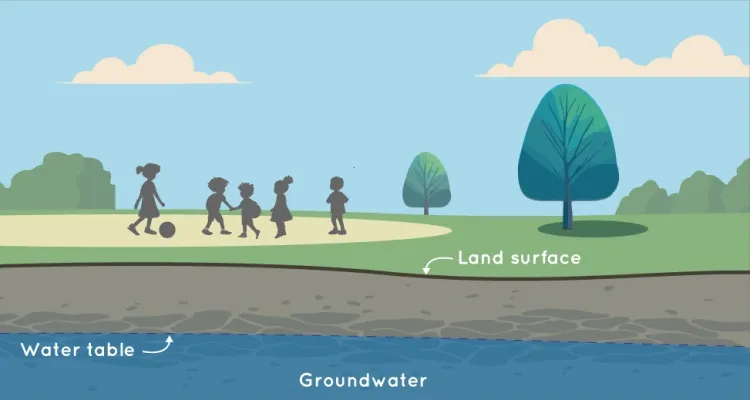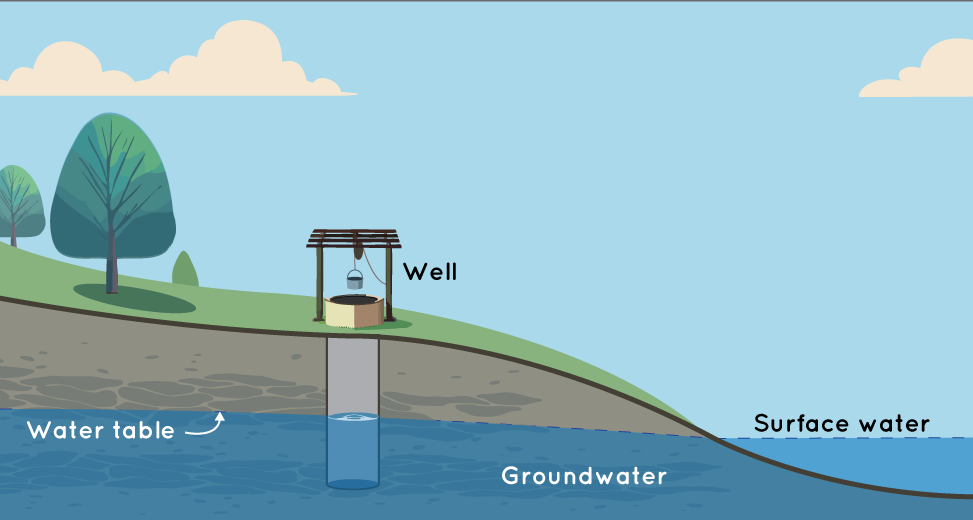Groundwater: The Hidden Treasure Beneath Our Feet...!!!
Groundwater is a hidden yet invaluable resource that supports human life, agriculture, industry, and ecosystems. Its sustainable management is essential to meet the growing water demands of an increasing global population and to address the challenges posed by climate change and contamination.

Groundwater is an essential part of the Earth's water cycle, acting as a concealed reservoir that sustains ecosystems, supports agriculture, and provides drinking water to billions globally. Despite its significance, groundwater often remains overlooked compared to more visible water bodies like rivers, lakes, and oceans. Let's explore the intriguing world of groundwater, examining its sources, movement, significance, and challenges.
What is Groundwater?
Groundwater is water that resides beneath the Earth's surface within the pores and fractures of soil, sand, and rock. It gathers in aquifers, which are underground layers of permeable material capable of storing and transmitting water. These aquifers can be located at various depths, ranging from just a few meters below the surface to hundreds of meters underground.
The primary source of groundwater is precipitation, such as rain and snow, which infiltrates the soil and percolates downward through the unsaturated zone until it reaches the saturated zone, where all the pores are filled with water. This process, known as recharge, replenishes the groundwater supply.
Movement of Groundwater
Groundwater moves slowly through the subsurface, driven by gravity and pressure differences. The flow rate depends on the permeability of the aquifer material and the hydraulic gradient (the slope of the water table). In highly permeable materials like sand and gravel, groundwater can move relatively quickly, whereas in less permeable materials like clay and shale, the movement is much slower.
The water table, which is the upper surface of the saturated zone, can fluctuate based on factors such as precipitation, seasonal changes, and human activities. During periods of heavy rainfall, the water table may rise, while during droughts or excessive groundwater extraction, it may fall.

Importance of Groundwater
Groundwater plays a crucial role in sustaining life and supporting human activities:
-
Drinking Water Supply: Groundwater is a major source of drinking water for communities worldwide. In many regions, it is the primary or sole source of potable water, particularly in rural areas where surface water sources are limited.
-
Agriculture: Groundwater is vital for irrigation, providing a dependable water source for crops. In arid and semi-arid regions, where surface water is scarce, groundwater acts as a lifeline for agriculture.
-
Industry: Various industries rely on groundwater for their operations, including manufacturing, mining, and energy production. Groundwater is used for cooling, processing, and as a raw material in certain industries.
-
Ecosystems: Groundwater sustains wetlands, rivers, and lakes by supplying a consistent source of water, especially during dry periods. Many aquatic and terrestrial ecosystems depend on groundwater to maintain their health and biodiversity.
Challenges and Threats
Despite its importance, groundwater faces several challenges and threats:
-
Overextraction: Excessive groundwater extraction for agriculture, industry, and domestic use can lead to the depletion of aquifers, resulting in lower water tables and reduced water availability. In some regions, overextraction has caused land subsidence and the collapse of aquifers.
-
Contamination: Groundwater contamination from industrial waste, agricultural runoff, septic systems, and leaking underground storage tanks poses a significant threat to water quality. Contaminants such as nitrates, heavy metals, and pathogens can make groundwater unsafe for consumption and harmful to ecosystems.
-
Climate Change: Climate change impacts the recharge and availability of groundwater. Changes in precipitation patterns, increased evaporation, and prolonged droughts can reduce groundwater recharge, affecting water supply and ecosystem health.
-
Groundwater Management: Effective groundwater management is essential to ensure sustainable use. This includes monitoring groundwater levels, regulating extraction, protecting recharge areas, and addressing contamination. Integrated water resource management approaches that consider both surface and groundwater are crucial for long-term sustainability.
Groundwater is a hidden yet invaluable resource that supports human life, agriculture, industry, and ecosystems. Its sustainable management is essential to meet the growing water demands of an increasing global population and to address the challenges posed by climate change and contamination. By understanding and protecting this vital resource, we can ensure that groundwater continues to provide for future generations and maintain the health of our planet's ecosystems. Whether it's the water we drink, the food we eat, or the natural habitats we cherish, groundwater plays an indispensable role in sustaining life on Earth.
What's Your Reaction?

















